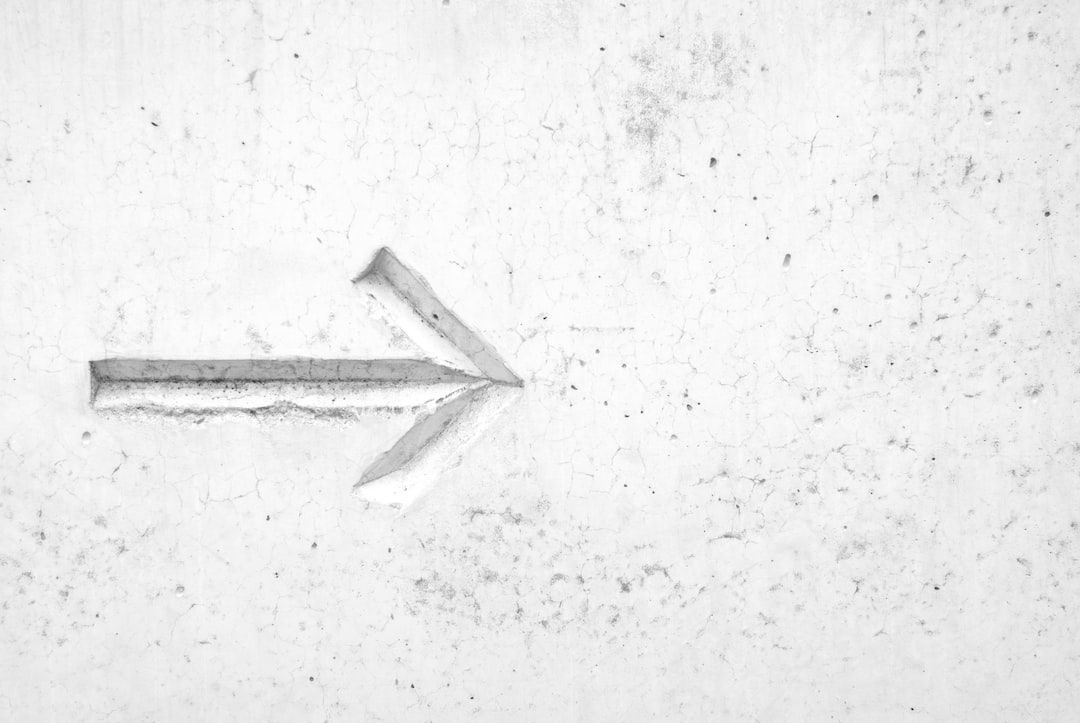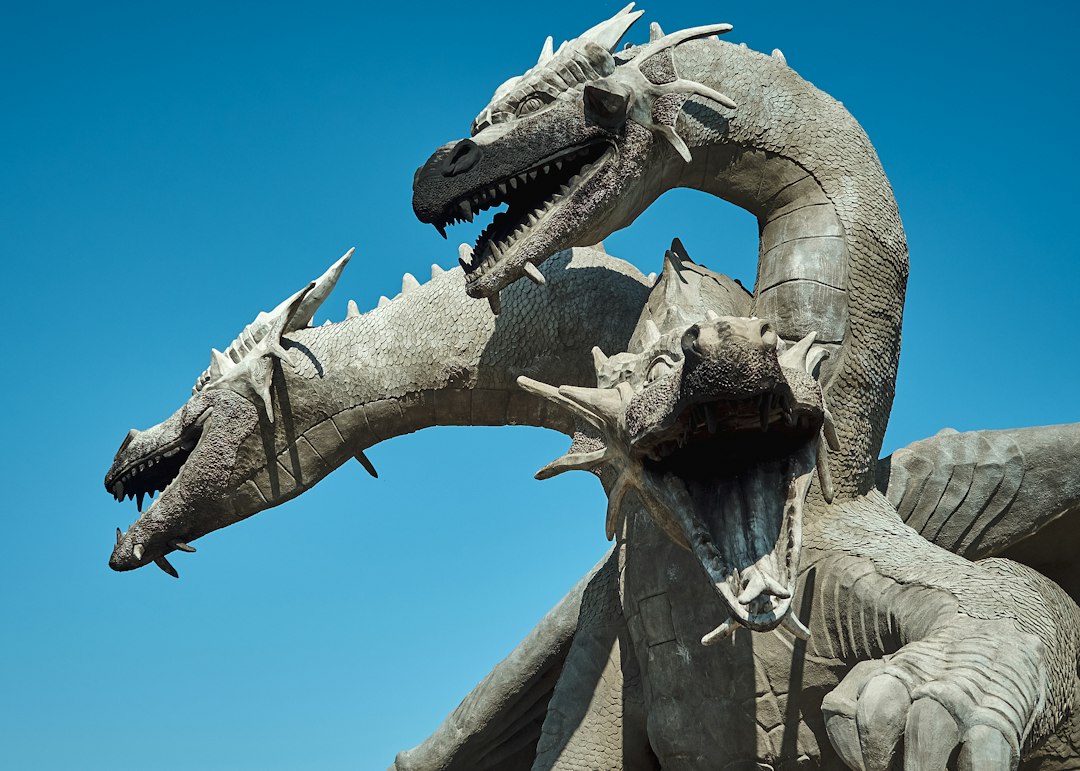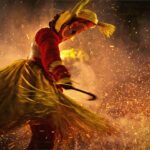The Jinn, also known as Djinn or Genies, are supernatural creatures that play a significant role in Arabian mythology. They are often depicted as powerful beings with the ability to shape-shift, possess humans, and grant wishes. The word “Jinn” comes from the Arabic word “janna,” which means “to hide” or “to conceal.” This reflects their elusive nature and their ability to remain unseen by humans.
In Arabian mythology, the Jinn are believed to be made of smokeless fire, unlike humans who are made of clay. They are considered to be sentient beings with free will and are capable of both good and evil actions. The Jinn are said to inhabit the unseen world, living alongside humans but remaining hidden from their sight.
The history of the Jinn can be traced back to ancient Arabian folklore and mythology. They have been mentioned in various texts and stories throughout history, including the Quran and the Hadith.
Key Takeaways
- Jinn are supernatural beings in Arabian mythology with various forms and abilities.
- Their roots can be traced back to ancient texts and they play a significant role in Islamic beliefs and Muslim culture.
- Jinn have mysterious powers and are often depicted in folklore interacting with humans.
- However, they also have a malevolent nature and traditional methods and modern practices are used for protection against them.
- Jinn have been represented in literature and film, but their existence and significance in modern times are still debated.
The Origin of the Jinn: Tracing their Roots in Ancient Texts
The Jinn have a prominent presence in Islamic texts, particularly in the Quran and the Hadith. In Islamic belief, the Jinn were created by Allah before humans and were given free will just like humans. They were created from smokeless fire, while humans were created from clay.
In the Quran, there are several verses that mention the Jinn. They are described as beings that can see humans but remain invisible to them. The Quran also mentions that some Jinn are believers in Islam, while others are disobedient and follow Iblis (Satan).
The Hadith, which are collections of sayings and actions of Prophet Muhammad, also mention the Jinn. There are stories of Prophet Muhammad interacting with Jinn and even performing exorcisms to rid people of Jinn possession.
Before the advent of Islam, the Jinn were already a part of Arabian mythology. They were believed to be powerful beings that could bring both good fortune and misfortune to humans. They were often worshipped as deities and were associated with natural phenomena such as storms, earthquakes, and diseases.
The Different Types of Jinn: Exploring their Varied Forms and Abilities
The Jinn are classified into different types based on their abilities and characteristics. One classification system divides them into three categories: Marid, Ifrit, and Sila. The Marid are considered the most powerful and rebellious of the Jinn, while the Ifrit are known for their strength and cunning. The Sila are considered to be the weakest of the Jinn.
In terms of physical appearance, the Jinn are believed to have the ability to shape-shift and take on various forms. They can appear as humans, animals, or even inanimate objects. Some Jinn are said to have wings, while others are described as being monstrous in appearance.
The Jinn are believed to possess supernatural abilities and powers. They have the ability to teleport and become invisible, allowing them to move swiftly and remain hidden from human sight. They can also possess humans, taking control of their bodies and influencing their thoughts and actions. Additionally, the Jinn are said to have the power to grant wishes, although this is often portrayed as a dangerous proposition.
Jinn in Islamic Beliefs: Understanding their Role in Muslim Culture
| Topic | Description |
|---|---|
| Definition | Jinn are supernatural creatures in Islamic mythology that are made of smokeless flame and have free will. |
| Beliefs | Many Muslims believe that jinn can possess humans, cause illness, and bring good or bad luck. |
| Role in Culture | Jinn are often depicted in Islamic art and literature, and their stories are passed down through generations. |
| Exorcism | Islamic exorcism rituals are often performed to expel jinn from possessed individuals. |
| Controversy | Some Muslims believe that belief in jinn is un-Islamic and contradicts the teachings of the Quran. |
In Islamic belief, the Jinn are considered to be real beings that exist alongside humans in a parallel world. They are believed to have free will and can choose between good and evil actions, just like humans. While some Jinn are believed to be believers in Islam, others are seen as disobedient and followers of Iblis (Satan).
Beliefs about the Jinn vary among different Muslim cultures. Some believe that the Jinn can bring good fortune and blessings, while others see them as malevolent beings that can cause harm and misfortune. There are also beliefs that the Jinn can possess humans and cause mental and physical illnesses.
In Islamic rituals and practices, there are specific prayers and supplications that are recited to seek protection from the Jinn. These rituals often involve reciting verses from the Quran and seeking refuge in Allah from the influence of the Jinn.
The Jinn also have a presence in Islamic literature and art. They are often depicted in stories and poems, both as benevolent beings and as malevolent creatures. Their portrayal in art varies, with some artists depicting them as beautiful and ethereal beings, while others depict them as monstrous and terrifying.
The Mysterious Powers of the Jinn: Unveiling their Supernatural Abilities
The Jinn are believed to possess a wide range of supernatural abilities, which contribute to their mysterious nature. Some of these abilities include teleportation, invisibility, shape-shifting, possession, mind control, and telekinesis.
Teleportation is one of the most commonly attributed powers to the Jinn. They are believed to have the ability to move swiftly from one place to another, disappearing and reappearing at will. This ability allows them to remain hidden from human sight and carry out their actions without being detected.
Invisibility is another power associated with the Jinn. They are believed to have the ability to become invisible to humans, allowing them to observe humans without being seen. This power adds to their elusive nature and their ability to conceal themselves from human perception.
Shape-shifting is a well-known ability of the Jinn. They are believed to have the power to take on various forms, including humans, animals, and even inanimate objects. This ability allows them to deceive humans and manipulate their surroundings.
Possession is another power attributed to the Jinn. They are believed to have the ability to possess humans, taking control of their bodies and influencing their thoughts and actions. This power is often associated with mental and physical illnesses, as it is believed that the Jinn can cause harm to humans through possession.
Mind control and telekinesis are also powers associated with the Jinn. They are believed to have the ability to manipulate human minds and control their thoughts and actions. Additionally, they are believed to have the power to move objects with their minds, without any physical contact.
Jinn in Folklore: Tales of their Interactions with Humans

The Jinn have a rich presence in Arabian folklore, particularly in the famous collection of stories known as Arabian Nights or One Thousand and One Nights. These stories feature various tales of interactions between humans and Jinn, often portraying them as powerful beings capable of granting wishes or causing mischief.
One of the most famous stories involving Jinn is the tale of Aladdin and the Magic Lamp. In this story, Aladdin discovers a magical lamp that contains a powerful Jinn who grants him wishes. The story highlights the power and potential danger of interacting with Jinn.
The Jinn also have a presence in folklore from other cultures. In Persian folklore, they are known as Peris and are often depicted as beautiful and benevolent beings. In Indian folklore, they are known as Jinns or Genies and are often portrayed as mischievous creatures that can grant wishes.
In modern times, the Jinn continue to be a part of folklore and urban legends. There are stories of encounters with Jinn in haunted places or instances of possession by malevolent Jinn. These stories contribute to the ongoing fascination with the Jinn and their mysterious nature.
The Dark Side of Jinn: Examining their Malevolent Nature
While some Jinn are believed to be benevolent or neutral towards humans, there is also a belief in malevolent Jinn that can cause harm and misfortune. In Islamic beliefs, these malevolent Jinn are often associated with Iblis (Satan) and are seen as enemies of humans.
Jinn possession is a phenomenon that is believed to be caused by malevolent Jinn. It is believed that these Jinn can enter a person’s body and take control, causing mental and physical illnesses. The symptoms of Jinn possession can vary, ranging from mood swings and hallucinations to seizures and unexplained physical ailments.
Exorcism is often performed to rid a person of Jinn possession. Islamic exorcism rituals involve reciting verses from the Quran and seeking refuge in Allah from the influence of the Jinn. These rituals are believed to weaken the Jinn’s hold on the person and eventually expel them.
Protection from malevolent Jinn is an important aspect of Islamic belief. Muslims are encouraged to seek refuge in Allah and recite specific prayers and supplications for protection from the influence of the Jinn. Additionally, there are traditional methods of protection, such as wearing amulets or using specific herbs and oils.
Protection from Jinn: Traditional Methods and Modern Practices
In addition to seeking refuge in Allah and reciting specific prayers, there are traditional methods of protection from Jinn that have been passed down through generations. These methods often involve the use of amulets, talismans, or charms that are believed to ward off the influence of malevolent Jinn.
Certain herbs and oils are also believed to have protective properties against Jinn. Burning certain herbs or using specific oils in a diffuser is believed to create a protective barrier against malevolent Jinn.
In modern times, there are also practices that have emerged for protection from Jinn. Some people use technology, such as playing Quranic verses or recitations on loop, to create a protective environment in their homes. Others may seek the help of spiritual healers or perform specific rituals for protection.
Religion plays a significant role in protection from Jinn. Muslims believe that seeking refuge in Allah and reciting verses from the Quran are the most effective means of protection. The belief in the power of Allah and the strength of faith are seen as essential in warding off the influence of malevolent Jinn.
Jinn in Popular Culture: Their Representation in Literature and Film
The Jinn have been a source of inspiration for writers, filmmakers, and artists around the world. They have been depicted in various forms of popular culture, including literature, film, TV, and video games.
In literature, the Jinn have been featured in numerous works, both ancient and modern. They are often portrayed as powerful beings with the ability to grant wishes or cause mischief. Some notable examples include “Arabian Nights,” “The Golem and the Jinni,” and “American Gods.”
In film and TV, the Jinn have been portrayed in various ways. They are often depicted as magical beings with the ability to grant wishes or possess humans. Some popular examples include Disney’s “Aladdin,” “The Wishmaster” series, and the TV show “Supernatural.”
Video games have also incorporated the concept of Jinn into their narratives. They are often portrayed as powerful enemies or allies that players must interact with. Some notable examples include “Assassin’s Creed,” “Prince of Persia,” and “Final Fantasy.”
The Enigma of the Jinn: Debating their Existence and Significance in Modern Times
The existence of the Jinn is a topic of debate among scholars, scientists, and skeptics. While belief in the Jinn is deeply rooted in Arabian mythology and Islamic beliefs, some argue that they are merely a product of folklore and superstition.
From a scientific perspective, the concept of Jinn is often dismissed as a cultural belief or a manifestation of psychological phenomena. Skeptics argue that the experiences attributed to Jinn possession can be explained by mental illnesses or suggestibility.
Despite the skepticism, the Jinn continue to hold significance in modern culture. They remain a popular subject in literature, film, and other forms of popular culture. The fascination with the Jinn and their mysterious nature continues to captivate people around the world.
Conclusion: The Jinn remain a fascinating and mysterious aspect of Arabian mythology, with a rich history and varied beliefs about their nature and abilities. Whether they are seen as malevolent or benevolent, their influence on culture and folklore continues to captivate people around the world. While their existence may be debated, their significance in Arabian mythology and Islamic beliefs cannot be denied. The Jinn continue to be a source of inspiration for writers, filmmakers, and artists, ensuring that their enigmatic presence will endure for generations to come.
FAQs
What are Jinn?
Jinn are supernatural creatures in Arabian mythology. They are believed to be made of smokeless flame or “scorching wind” and are capable of shape-shifting and possessing humans.
What is the origin of Jinn?
Jinn are believed to have been created by Allah before humans. They are mentioned in the Quran and Islamic texts as well as in pre-Islamic Arabian folklore.
What is the role of Jinn in Arabian mythology?
Jinn are believed to be powerful and unpredictable beings that can either help or harm humans. They are often associated with magic and are believed to have the ability to grant wishes.
What are some common beliefs about Jinn?
Some common beliefs about Jinn include that they can be summoned through rituals, that they can possess humans and cause illness or mental disorders, and that they can be appeased or controlled through offerings or spells.
Are Jinn considered evil?
Jinn are not inherently evil, but they are believed to have free will and can choose to do good or evil. In Islamic tradition, some Jinn are believed to be Muslim and others are not.
What is the relationship between Jinn and humans?
Jinn are believed to coexist with humans in the same world, but in a different dimension. They are believed to be able to see and interact with humans, but humans cannot see them unless they choose to reveal themselves.
Are there any famous stories or legends about Jinn?
One famous story about Jinn is the tale of Aladdin and the genie, which originated in the collection of Middle Eastern folk tales known as One Thousand and One Nights. Another famous story is the legend of the jinni who helped King Solomon build his temple.







